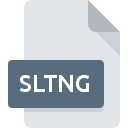.SLTNG File Extension

StarLogo TNG Project File
| Developer | MIT |
| Popularity | |
| Category | Developer Files |
| Format | .SLTNG |
| Cross Platform | Update Soon |
What is an SLTNG file?
.SLTNG file extension is synonymous with StarLogo TNG, a powerful platform developed by the Massachusetts Institute of Technology (MIT) for modeling emergent phenomena.
It serves as the vessel for storing StarLogo TNG projects, encapsulating the intricate simulations and computational models crafted by users.
These files are essential components in harnessing the capabilities of StarLogo TNG to explore and understand complex systems, ranging from ecological dynamics to social behaviors.
More Information.
StarLogo TNG was conceived as a platform for exploring emergent phenomena through agent-based modeling. Its predecessor, StarLogo, laid the groundwork by introducing the concept of agent-based modeling to a broader audience.
StarLogo TNG took this vision further, leveraging modern computing capabilities to provide a more intuitive and visually compelling environment for modeling complex systems.
The .SLTNG file extension was integral to this vision, serving as the canvas upon which users could craft intricate simulations and explore the dynamics of complex systems.
Origin Of This File.
The genesis of StarLogo TNG traces back to the early 2000s, emerging as a successor to the original StarLogo software.
Conceived as a tool for teaching and researching complex systems, StarLogo TNG aimed to democratize computational modeling, making it accessible to learners and educators across diverse domains.
The .SLTNG file extension thus embodies the spirit of this endeavor, encapsulating the fruits of exploration and experimentation within the realm of computational science and education.
File Structure Technical Specification.
The .SLTNG file extension adheres to a structured format designed to encapsulate the various elements of a StarLogo TNG project.
At its core, it comprises a collection of code, graphical assets, and configuration settings necessary for recreating the simulation environment. The file structure typically includes:
- Code Components: This encompasses the scripts and algorithms defining the behavior of agents within the simulation. Written in a user-friendly language akin to Logo, these scripts dictate the rules governing agent interactions and system dynamics.
- Graphics and Media: The .SLTNG file may incorporate graphical assets such as sprites, backgrounds, and visual elements used to represent agents and their environment. These media assets play a crucial role in enhancing the visual appeal and realism of the simulation.
- Configuration Settings: These settings govern the parameters and initial conditions of the simulation, allowing users to customize various aspects such as agent properties, environmental factors, and simulation duration.
How to Convert the File?
Converting .SLTNG files to other formats may not be a standard functionality directly supported by the StarLogo TNG software.
There are alternative methods to achieve this, depending on the desired output format and the contents of the .SLTNG file. Here are a few possible approaches:
- Export as Video or Image Sequence: StarLogo TNG allows users to export simulations as video or image sequences, which can then be used in other applications or platforms. To do this, navigate to the export options within the StarLogo TNG interface and choose the desired output format (e.g., AVI, MPEG, PNG, JPEG). Follow the on-screen instructions to export the simulation, and then use video/image editing software to further manipulate or convert the exported files as needed.
- Manual Reconstruction: If the .SLTNG file contains relatively simple simulations or visualizations, users may opt to manually reconstruct the simulation in another software environment. This could involve recreating the simulation logic and visual elements using programming languages like Python or JavaScript, or utilizing specialized simulation software with compatibility for common file formats.
- Third-party Conversion Tools: There may be third-party tools or utilities available that claim to convert .SLTNG files to other formats. However, users should exercise caution when using such tools, as they may not always produce accurate or reliable results. Additionally, ensure that any third-party software used for conversion is obtained from reputable sources to mitigate the risk of malware or other security threats.
- Custom Scripting or Automation: For users with programming skills, it may be possible to develop custom scripts or automation workflows to parse and extract data from .SLTNG files, converting them into desired output formats. This approach offers greater flexibility and control over the conversion process but may require a deeper understanding of the .SLTNG file structure and relevant programming languages or frameworks.
Advantages And Disadvantages.
Advantages:
- Accessibility: StarLogo TNG and its associated .SLTNG files are freely available, making them accessible to educators, students, and researchers worldwide.
- Educational Value: The intuitive interface and visual feedback provided by StarLogo TNG make it an invaluable tool for teaching and learning complex systems concepts.
- Flexibility: Users can easily modify and extend existing .SLTNG files to explore different scenarios and hypotheses within the realm of complex systems.
Disadvantages:
- Learning Curve: While StarLogo TNG is designed to be user-friendly, mastering the intricacies of computational modeling can still pose a challenge for novice users.
- Performance: Complex simulations involving large numbers of agents or intricate interactions may strain computational resources, leading to performance issues.
- Scope: While StarLogo TNG is capable of simulating a wide range of phenomena, it may not always be suitable for highly specialized or domain-specific applications.
How to Open SLTNG?
Open In Windows
- Download the Windows version of StarLogo TNG from the official website or other trusted sources.
- Install the software by following the on-screen instructions.
- Once installed, launch StarLogo TNG by double-clicking its icon.
- In the StarLogo TNG interface, select the “Open” option from the File menu.
- Navigate to the location of the .SLTNG file you want to open, select it, and click “Open.”
Open In Linux
- Locate the Linux version of StarLogo TNG from the official website or trusted repositories.
- Install StarLogo TNG using the package manager or by following the installation instructions provided.
- Once installed, launch StarLogo TNG from the applications menu or by running the appropriate command in the terminal.
- Access the File menu within StarLogo TNG and choose the “Open” option.
- Navigate to the location of the .SLTNG file you want to open, select it, and click “Open.”
Open In MAC
- Obtain the macOS version of StarLogo TNG from the official website or other reputable sources.
- Install StarLogo TNG by dragging the application icon into the Applications folder.
- Launch StarLogo TNG from the Applications folder or by searching for it in Spotlight.
- Use the File menu in StarLogo TNG to select “Open.”
- Browse to the directory containing the .SLTNG file you wish to open, choose the file, and click “Open.”













